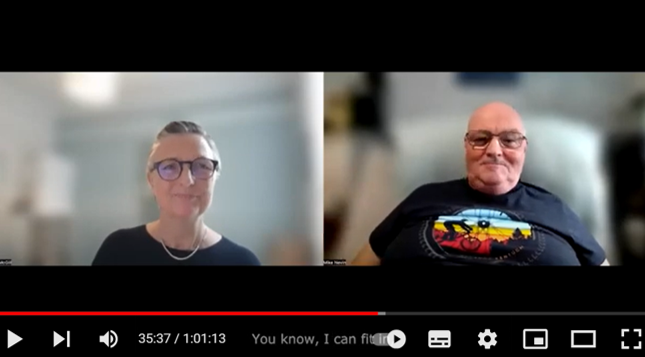Talk to us 0300 365 3100

Talk to us 0300 365 3100
Talk to us 0300 365 3100

Following hot on the heels of a very successful Accessible Homes Week 2023 online campaign, our associated online event took an in depth look into the findings from our research, Living not existing: The economic & social value of wheelchair user homes .
The research was carried out by London School of Economics (LSE) and Political Science Housing and Communities research group. It revealed that building more wheelchair user homes for disabled people, from children to adults over 66, could save the public purse millions over a 10 year period.
The event was attended by a range of housing sector professionals from local authorities, housing associations, architects, designers and occupational therapy teams and featured a panel that included:
Panel members shared their response to the findings and what they may mean in the wider context of housing development, policy and planning and the reality of being a disabled person looking for a wheelchair user home.
Policy context
Opening the session, Habinteg’s Chief Executive, Nick Apetroaie, said: “Our new research reveals a clear and powerful economic case for wheelchair accessible homes that must not be ignored.
“Behind the numbers we must not forget that the shortage of wheelchair accessible properties has a profound negative impact on people’s daily lives… we ask the Government to set a clear requirement for every local authority to create a robust plan for new wheelchair accessible homes.”
He went on to reemphasise the need for the Department of Levelling Up, Housing and Communities to follow through on the Government’s decision to establish the M4(2) accessible and adaptable standard as the regulatory baseline for new homes, before the general election.
Benefits of wheelchair user homes
Nick passed the baton to Habinteg’s Director of Social Impact & External Affairs, Christina McGill. She opened an informative conversation with the panel by delving into a discussion with the report’s research team, LSE’s Bert Provan and Laura Lane, on the benefits of wheelchair user homes that the research revealed.
Bert explained: “We identified there are three practical benefits. Firstly, for wheelchair users like building independence by being able to do day to day activities by themselves… secondly, improving their overall wellbeing.
“Thirdly, there are public sector and public expenditure benefits, such as the reductions in expenditure on health or social care, and an increased ability for some people to work and therefore contribute to income tax and national insurance.”
Laura spoke in detail about the lived experience of the people interviewed as part of the research.
“There was an expectation from the people we spoke to that they wouldn't necessarily find somewhere to live that was perfect for their needs. And there was an understanding that in both renting and owning, that there should be the opportunity to find something that is workable, which they could then go on and make adaptations to.
"People also talked about the allocations process, and how there was this assumption that any accessible home would do or any home with any adaptation would work, and one of our respondents talked about a home they'd been offered that had a stairlift, which was entirely unsuitable for their needs as a family.”
Our Insight Group member Mike spoke eloquently to Christina about his personal experience of moving from Somerset to Durham to live a more independent life.
Mike said: “An inheritance gave us enough money to look for a suitable property for our needs, but unfortunately, we couldn't find one in the south-west and that's when we looked further, and further north and we found our current property. It was the only one we could find that was fully suitable for my needs.”
But he added: “While it’s wonderful to find an accessible property you can afford, you shouldn't have to move 350 miles to find that.”
Housing planning and delivery
Vanessa Dockerill, the Government’s Disability and Access Ambassador for private Housing shed some light on who has the biggest role to play in ensuring the delivery of suitable housing for disabled people.
“We need to get some momentum with house builders to encourage them to build wheelchair accessible homes, and to look at the benefits of providing more accessible housing,” she said.
Claire Stafford of the Royal Town and Planning Institute added further insight. She spoke about the need for a collaborative partnership between public health, social care and housing planners to ensure planning for wheelchair user homes gets the collaborative attention it deserves.
Claire said: “At the moment there can often be siloed working on this topic between the council, the community and central Government so there's a need for strategic thinking to bring a network of professionals and non-professionals [together] on this.”
Resources